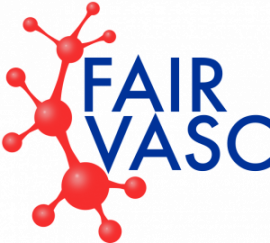ANCA Associated Vasculitis (AAV)
Granulomatosis with Polyangiitis (GPA, formerly called Wegener’s granulomatosis), Microscopic Polyangiitis (MPA) and Eosinophilic Granulomatosis with Polyangiitis (EGPA, formerly called the Churg-Strauss syndrome), are primary systemic vasculitides (a group of uncommon but serious multisystem autoimmune disorders characterized by blood vessel inflammation), mainly affecting small and medium vessels. Because of similarities in the clinical and pathological features among these diseases and the strong association of anti-neutrophil cytoplasmic antibodies (ANCA) with GPA, MPA and EGPA, these diseases are usually grouped and studied as one group referred to as ANCA-associated vasculitis (AAV). There are two main ANCA serotypes associated with AAV, the proteinase-3 (PR3) and myeloperoxidase (MPO). Some authors prefer to classify the AAV into PR3 and MPO-associated disease rather than the traditional classification based on the three abovementioned disease phenotypes.
You can also find detailed information for patients here: https://www.vasculitis.org.uk/about-vasculitis/diseases-affecting-small-blood-vessels
The aetiology of AAV is largely unknown but possible interaction between genetic and environmental factors may play a role in the development of the disease. AAV associated with PR3 ANCA is associated with the locus HLA-DP, and variants of genes encoding α1-antitrypsin (SERPINA1) and proteinase 3 (PRTN3) while MPO-ANCA is associated with the HLA-DQ locus. Among the environmental factors discussed in the literature are exposure to infections, drugs and dusts (silica in particular).
Epidemiology of AAV
During the last 30 years an increasing number of studies have addressed the epidemiology of AAV in Europe and around the world. Many of these studies showed an increased incidence of AAV with time. A possible explanation is better awareness of these diseases among physicians together with availability of diagnostic tests including ANCAs. The current combined annual incidence of AAV in Europe is around 20 per million inhabitants. Males and females are equally affected. The incidence of AAV increases with age, to reach its maximum in the age group 75 years and older. AAV are less common in paediatric populations.
Clinical features of AAV
GPA is a chronic inflammatory disease most commonly involving the upper and lower respiratory tracts and kidneys, and characterized by a course of relapsing and remitting inflammation.. The most common clinical presentation in GPA is the involvement of upper airways and the ear-nose-throat (ENT) region with nasal congestion and sinusitis, epistaxis (nosebleed), hearing loss and subglottic stenosis (a narrowing of the airway below the vocal cords (subglottis) and above the trachea). Pulmonary involvement occurs in 31-63%, with nodules and infiltrates. Kidney disease is a common and serious manifestation in GPA, reported in 11-77 % of patients at diagnosis to 85% at any time during the course of the disease. Peripheral neuropathy (numbness, tingling, weakness and pain in the extremities) is frequent in generalized GPA and reported in up to 84%, while CNS involvement is rare. Positive PR3-ANCA has been reported in 76-86% of patients with GPA.
MPA is a systemic necrotizing vasculitis involving small vessels like small arteries, arterioles, capillaries and venules; and usually associated with severe renal disease (rapidly progressive glomerulonephritis). The disease may sometimes be preceded by early symptoms characterized by “flu like” illness and joint pain before severe systemic manifestations occur. Haemorrhagic pulmonary capillaritis (an inflammatory condition that causes the destruction of the tiny blood vessels that surround the air sacs) occurring in 12-38 %, and renal involvement reported in 79-100 %, are the most serious features of MPA. ANCA are frequently detected in patients with MPA; and are usually MPO-ANCA (56-81%) although PR3-ANCA are not uncommon (10-39%).
EGPA is a systemic granulomatous vasculitis that usually occurs in patients with asthma and or allergic rhinitis. In addition to asthma, patients usually have fever, hypereosinophilia (very high numbers of blood eosinophils) and symptoms of cardiac failure, renal damage, and peripheral neuropathy resulting from widespread systemic vasculitis. The most common clinical features include asthma (100%), generalized fatigue and weight loss (70-90%), sinusitis (61-90%), pulmonary infiltrates (53-76%), peripheral neuropathy (67-92%), central nervous system manifestations (8%), gastrointestinal (33-47%), cardiac involvement (28-48%), renal involvement (12-67%). MPO-ANCA are positive in up to 40 % of patients with EGPA.
Treatment
Treatment of systemic vasculitis includes high-dose corticosteroids, cytotoxic drugs (as cyclophosphamide) and there is increasing use of biologic agents, rituximab. Other therapeutic interventions may be needed such as plasma exchange or renal replacement therapy (as dialysis).
You can also find more information for patients here: https://www.vasculitis.org.uk/about-vasculitis/treating-vasculitis and https://www.myancavasculitis.com/
Outcome and prognosis
Although the prognosis and ongoing quality of life for patients with AAV is often poor, it has improved remarkably after the introduction of effective treatment with cytotoxic drugs and recently biologics. However, the prolonged use of these drugs together with high dose glucocorticosteroids leads to serious toxic side effects such as infertility, malignancy, infections, metabolic complications (diabetes, dyslipidemia) and osteoporosis. Due to improved survival, studies on AAV have shifted focus from mortality to comorbidities and irreversible organ damage. Patients with AAV suffer a significantly higher rate of comorbidities compared to background population, including a 2-fold increase in the rate of myocardial infarction, 4-fold increase in venous thromboembolic diseases, 5-fold increase in severe infections, and 2-3 fold increased rates of malignancy. Not only are these comorbidities debilitating for the individual, but they also give rise to a great health-economic and societal burden.
